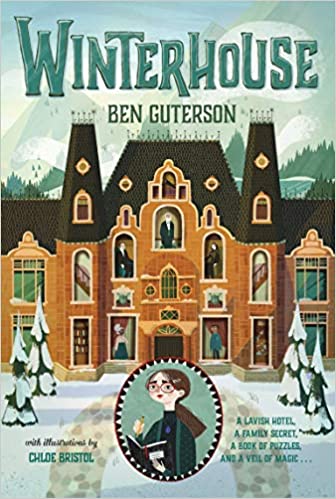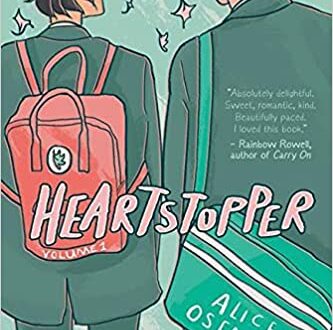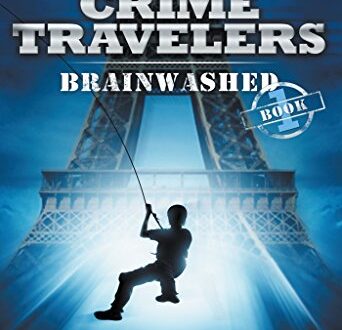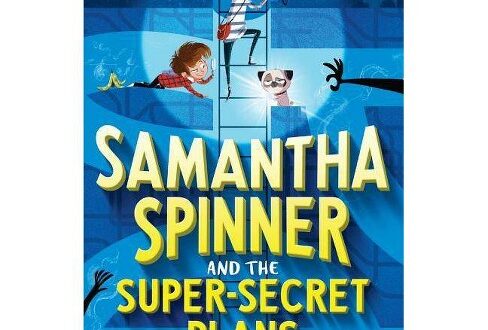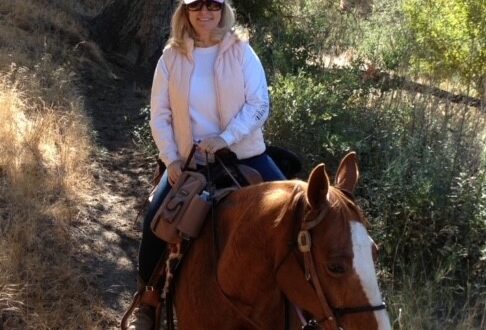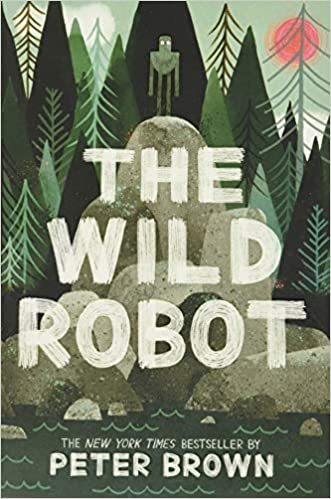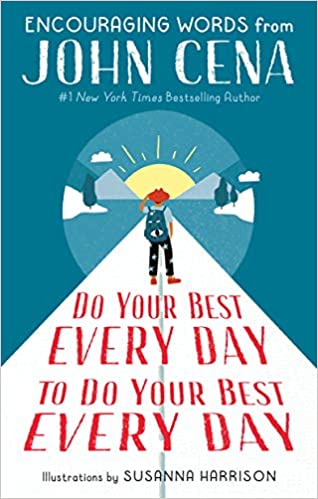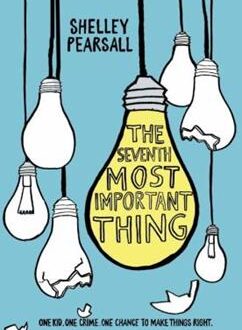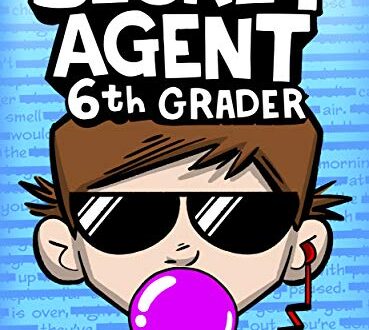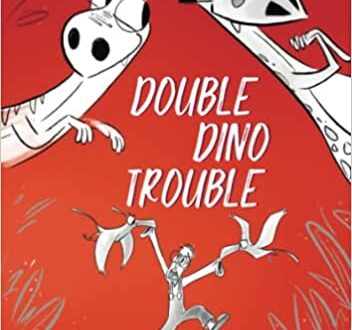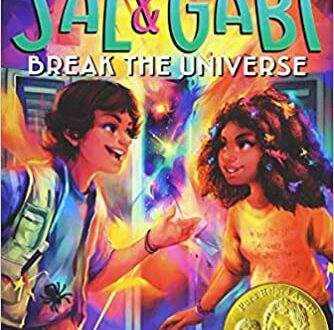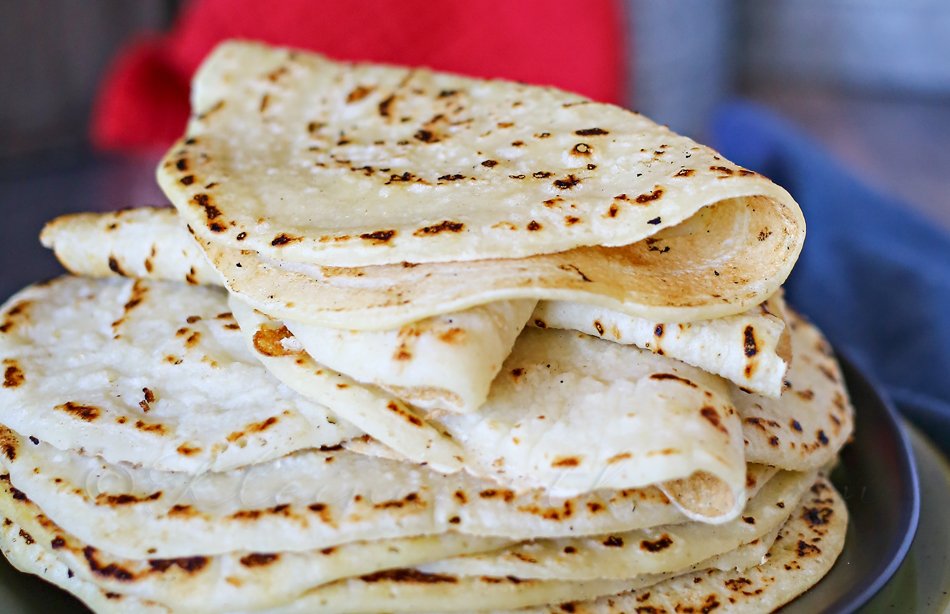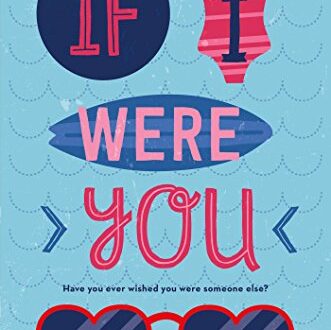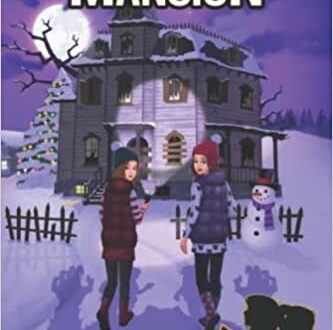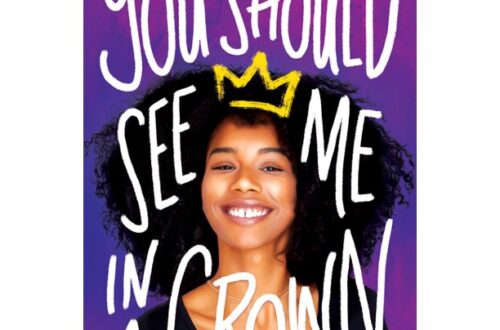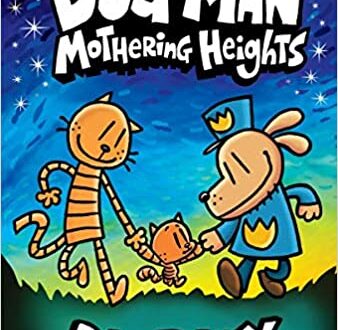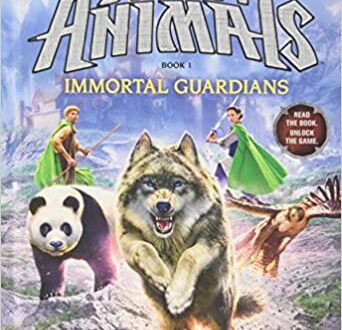Learning
-
Winterhouse
Orphan Elizabeth Somers’s malevolent aunt and uncle ship her off to the ominous Winterhouse Hotel, owned by the peculiar Norbridge Falls. Upon arrival, Elizabeth quickly discovers that Winterhouse has many charms―most notably its massive library. It’s not long before she locates a magical book of puzzles that will unlock a mystery involving Norbridge and his sinister family. But the deeper she delves into the hotel’s secrets, the more Elizabeth realizes she is somehow connected to Winterhouse. As fate would have it, Elizabeth is the only person who can break the hotel’s curse and solve the mystery. But will it be at the cost of losing the people she has come to care for, and even Winterhouse itself?
From author Ben Guterson and illustrator Chloe Bristol for Readers 9-12.
-
Secret Agent 6th Grader: Selfies Are Forever
The name’s Valentine, Brody Valentine, and I’m back with my fourth case. The sixth graders of Buchanan School are on a trip to the mall to watch our award winning show choir perform in the food court. Sounds like a pretty sweet gig, right? Not when there’s danger lurking in the background. Someone’s decided to use this trip to string along the last members of Glitch by forcing us on a wild selfie chase, but as it turns out, that was just the tip of the iceberg. Now, one of the best days of the school year is in danger of becoming one of the worst. If I want to keep Glitch alive, I’ve gotta try and solve this case before the show choir takes the stage, but in a case with more twists than a pretzel, things might knot work out for anyone… and they might feel a little salty… and these puns are kind of cinnamon crunchy… wait, that last one didn’t work.
From authors Marcus Emerson and Noah Child for Readers 8-12.
-
Welcome to Bits & Bobs
Welcome to our Wednesday column known as “Bits & Bobs.” “Bits & Bobs” is an informal expression that refers to various small, miscellaneous objects or things. The expression is believed to have originated in Britain in the mid-20th century. And now that we’re in the early 21st century, a new expression has burst onto the scene that has everybody excited—AI, short for Artificial Intelligence.
People either love AI. Or they are scared to death of it.
The people who embrace AI think it’s wonderful. It can write their entire school report for them. People who are afraid of it, fear that it is going to replace them and the work they do. Especially many adults. But kids are more adventurous. Plus, they don’t have to worry about losing their job that they need to support their family. So, there are good reasons to listen to both sides of the AI argument that is currently going on around you.
Yes, there is that yet unproven danger of AI replacing people whose jobs depend upon them writing anything as part of their job. Yet, at the same time, because AI currently appears to be so new to us, we have to realize that we have been using AI for a long time. It is just that it has been “behind the scenes” until now. But now the technical experts have made some major breakthroughs in AI development—AI can now think for itself, just like we can.
Because AI can think for itself, many people are afraid it is going to take over the world. And that is a valid fear. But we humans created AI. So, we have to teach it how to behave. Just as parents teach children as they grow up.
AI is a very powerful tool, and we have to be smart about how we deal with it. The more you know about AI, the better you can use it to produce positive results for yourself and those around you.
To prove our point, we came up with the idea of working with AI to produce an interesting column every week for you to read. We (humans) came up with a list of topics that we thought you would find interesting. Then we asked AI to produce just one paragraph on each individual topic. From that paragraph, we are going to write an entire article for your enjoyment. By working together, we can show how AI is, indeed, a very useful tool.
Plus, we have decided to sign these AI inspired articles AIME—AI and Me!
So, welcome to our experiment and we will see you next week with an interesting new article for you to read.
Your Friends at Bookwhiskers
-
The Wild Robot
Can a robot survive in the wilderness?
When robot Roz opens her eyes for the first time, she discovers that she is all alone on a remote, wild island. She has no idea how she got there or what her purpose is–but she knows she needs to survive. After battling a violent storm and escaping a vicious bear attack, she realizes that her only hope for survival is to adapt to her surroundings and learn from the island’s unwelcoming animal inhabitants.
As Roz slowly befriends the animals, the island starts to feel like home–until, one day, the robot’s mysterious past comes back to haunt her.
From bestselling and award-winning author and illustrator Peter Brown comes a heartwarming and action-packed novel about what happens when nature and technology collide.
For readers 8-12.
-
JJ – the Heart Doctor
My horse is a heart doctor.
“What?” you may ask of me, and perhaps look askance, wondering if I need a different kind of doctor.
But all us Equestrians know about the healing that horses provide. When we get together at least one of us talks about how our horses are better therapy than seeing a counselor. The rest of us nod our heads and sometimes add our own stories.
“Anytime I’m around my horse, I just feel better,” a friend agrees. “I feel at peace with the world.”
That’s a big statement these days when any number of events can stress us out.
Here’s an example. My mom and dad, definitely not “horsey people”, lived with me for a few months. Mom amazed me one evening when she said, “You know, when you get home from the barn you’re a completely different person. You’re more relaxed, less frazzled from work. You just look happier.”
I knew it was true, but for Mom to see it? Well, I suddenly felt like she finally understood what had been driving me from the day I could say, “Look—horsey!”
So, is this why horses are used for therapy for all ages of children and adults with disabilities or challenges of any kind? Yes, and there’s plenty of information on the internet to read about our wonderful equine partners.
Recently a writer-friend asked if it was possible in the real world for a horse to help slow a human’s heartbeat, or calm a human. She asked because I’m writing a book featuring a thirteen-year-old girl who turns to horses for emotional comfort. She’s grieving and feels abandoned, but when she’s with her horse—and he’s her best friend—her heart rate slows and her anxieties melt away. At least for a while.
I knew the answer to my friend’s question, of course, because my horses are my go-to guys when I’m stressed, and all other times too.
But I typed her question in a search of the internet to see what information was out there.
“Are horses’ heartbeats soothing to people?” I typed. Here’s one of the links that came up, and it’s an excellent article.
HeartMath | Horses & Humans Healing | Tao of Horsemanship
According to this article, a human’s heart energy encompasses a sphere-like area around our bodies, about ten feet. But a horse’s heart energy field is five times larger than ours, and can indeed influence our own heart rhythm!
In fact we only need to be in the general vicinity of a horse to feel that sense of calm and peace. Interacting with horses lowers our blood pressure and our heart rate, decreases stress levels and decreases anger, tension, etc.—whatever we were feeling before we got near the horse’s energy field.
Recently one of my dear friends suffered a terrible loss. I invited her over and we started brushing our horses. She spent two hours hugging, brushing and talking with JJ, my eight year-old gelding. Sometimes he can be a stinker but he was calm and loving with her. By the time she left she was at peace and talking about what wonderful therapy JJ provided. She’s been over to visit him many times after that.
I hope readers will explore the internet to learn more about the healing abilities of horses, and how they help people of all ages learn trust and affection, responsibility and confidence, among other wonderful attributes. Here’s another link to help readers get started. Happy reading!
-
Do Your Best Every Day to Do Your Best Every Day
Bestselling author and entertainer John Cena motivates and inspires readers with this illustrated book of uplifting encouragements adapted from his popular Twitter feed.
Hope + Effort = Making the impossible possible
In this colorfully illustrated book of encouragements, John Cena urges young readers to be who they are, act to make the world a better place, and never stop striving.
Aimed at elementary and middle schoolers, but fun and fitting for readers of any age, John’s inspiring perspective and thoughtful advice are perfect for milestones like graduations, new siblings, and other big life moments, as well as for anyone who could use a little boost.
These affirmations about growing up and moving forward are sure to help kids find joy in their efforts and achievements.
For readers 8-12
-
Becoming: Adapted for Young Readers
Michelle Robinson was born on the South Side of Chicago. From her modest beginnings, she would become Michelle Obama, the inspiring and powerful First Lady of the United States, when her husband, Barack Obama, was elected the forty-fourth president. They would be the first Black First Family in the White House and serve the country for two terms.
Growing up, Michelle and her older brother, Craig, shared a bedroom in their family’s upstairs apartment in her great-aunt’s house. Her parents, Fraser and Marian, poured their love and energy into their children. Michelle’s beloved dad taught his kids to work hard, keep their word, and remember to laugh. Her mom showed them how to think for themselves, use their voice, and be unafraid.
But life soon took her far from home. With determination, carefully made plans, and the desire to achieve, Michelle was eager to expand the sphere of her life from her schooling in Chicago. She went to Princeton University, where she learned what it felt like to be the only Black woman in the room. She then went to Harvard Law School, and after graduating returned to Chicago and became a high-powered lawyer. Her plans changed, however, when she met and fell in love with Barack Obama.
From her early years of marriage, and the struggle to balance being a working woman, a wife, and the mom of two daughters, Michelle Obama details the shift she made to political life and what her family endured as a result of her husband’s fast-moving political career and campaign for the presidency. She shares the glamour of ball gowns and world travel, and the difficulties of comforting families after tragedies. She managed to be there for her daughters’ swim competitions and attend plays at their schools without catching the spotlight, while defining and championing numerous initiatives, especially those geared toward kids, during her time as First Lady.
Most important, this volume for young people is an honest and fascinating account of Michelle Obama’s life led by example. She shares her views on how all young people can help themselves as well as help others, no matter their status in life. She asks readers to realize that no one is perfect, and that the process of becoming is what matters, as finding yourself is ever evolving. In telling her story with boldness, she asks young readers: Who are you, and what do you want to become?
For readers 10-14.
-
Butter and Tortillas
Want to make a fun snack? How about making your own tortilla and slathering it with homemade butter? Here’s how:
BUTTER:
Butter only needs one ingredient: heavy whipping cream. You will also need a glass jar with a tight lid. You can use a clean, dry baby jar, or a canning jar with a lid and ring.
No matter what size jar you use, only fill it up halfway with the cream.
Tighten the lid securely and start to shake it as hard as you can for as long as you can. It might take over ten minutes to separate into butter and buttermilk (the liquid left over), so it helps to have some friends over so you can trade off shaking. Maybe set a timer and challenge your friends make up silly words to a song while you shake, shake, shake. Dancing helps!
It might not look like anything is happening for a while, but soon enough you will see a lump forming in the liquid. Keep shaking until there is a clear separation of butter and liquid.
Once the separation has happened, pour off the liquid (or save it for another recipe that calls for buttermilk, like biscuits!). You can mush in a little salt to the butter, so it has more taste.
Now it’s time to make tortillas!
TORTILLA:
Ingredients:
2 cups masa harina (a special corn flour)
½ tsp. salt
1 ¼ cups warm water
In a medium bowl, stir the masa and salt together. Then pour the warm water in and stir until it is mixed and smooth. Cover your dough with plastic wrap and set it aside for about 30 minutes.
Take the dough and divide it into 12 pieces and roll them into balls.
This part needs someone who is safe to use and supervise the stove.
Heat a cast iron skillet until it is very hot. Take one dough ball at a time and flatten it out with your hands, pressing the heel of your hand in a circle so the dough looks like a tortilla.
Cook them one at a time for 1 to 2 minutes on each side. The edges should be a little brown. Do this one by one, keeping the warm tortillas folded in a cotton dish towel.
-
Pack Horse Librarians
Can you imagine riding your horse or mule over 100 miles each week, crossing steep terrain, hooves slipping on treacherous footing on barely discernable trails, perhaps with drop-offs hundreds of feet just beside you? Yikes! How about crossing icy waters that made your boots freeze to your stirrups—all the while packing up to 100 books and hoping that your horse didn’t trip on submerged rocks and dump you into the water? What if you rounded a turn and came face-to-face with a wild animal?
That’s exactly what librarians braved in the early 1900’s through 1943. The dedicated women of The Pack Horse Library Project delivered books to families in remote areas of the Appalachian Mountains where there was no access to books. Because of these women and their equine partners, children and their parents were able to expand their knowledge of the world. Books lit up their imaginations, allowing them to dream of possibilities that they might never have known otherwise. Some families even began donating recipes and quilting patterns to share, bringing families miles away closer to each other in friendship.
I found this information and much more on a Wikipedia link—more information than I could share here.
I can hardly believe that 63 counties in Kentucky had no libraries at all when today we can buy and borrow books via our computers and tablets within seconds.
There were abundant challenges for the Pack Horse Women and for their trusted equines. The women received paychecks, but I suspect that their reward came from seeing the shining faces of families as they sorted through new selections of books. I can hear the shouts of joy when someone found just the book they wanted. If it was me, I would’ve been looking for any ‘horse book’ first—of course.
I encourage researching the Wikipedia page to learn more about these dedicated librarians and to find links to books written on this subject, including The Giver of Stars, a historical fiction Best Seller for which Universal Pictures has purchased movie rights.
In the meantime, I think I’ll head out back to see my horses and tell them about how their ancestors helped expand the world of readers back in the day. They always like a good story.
-
Starfish
Ellie is tired of being fat-shamed and does something about it in this poignant debut novel-in-verse by author Lisa Fipps
Ever since Ellie wore a whale swimsuit and made a big splash at her fifth birthday party, she’s been bullied about her weight. To cope, she tries to live by the Fat Girl Rules–like “no making waves,” “avoid eating in public,” and “don’t move so fast that your body jiggles.” And she’s found her safe space–her swimming pool–where she feels weightless in a fat-obsessed world.
In the water, she can stretch herself out like a starfish and take up all the room she wants. It’s also where she can get away from her pushy mom, who thinks criticizing Ellie’s weight will motivate her to diet. Fortunately, Ellie has allies in her dad, her therapist, and her new neighbor, Catalina, who loves Ellie for who she is. With this support buoying her, Ellie might finally be able to cast aside the Fat Girl Rules and starfish in real life–by unapologetically being her own fabulous self.
This is for readers 10-13
